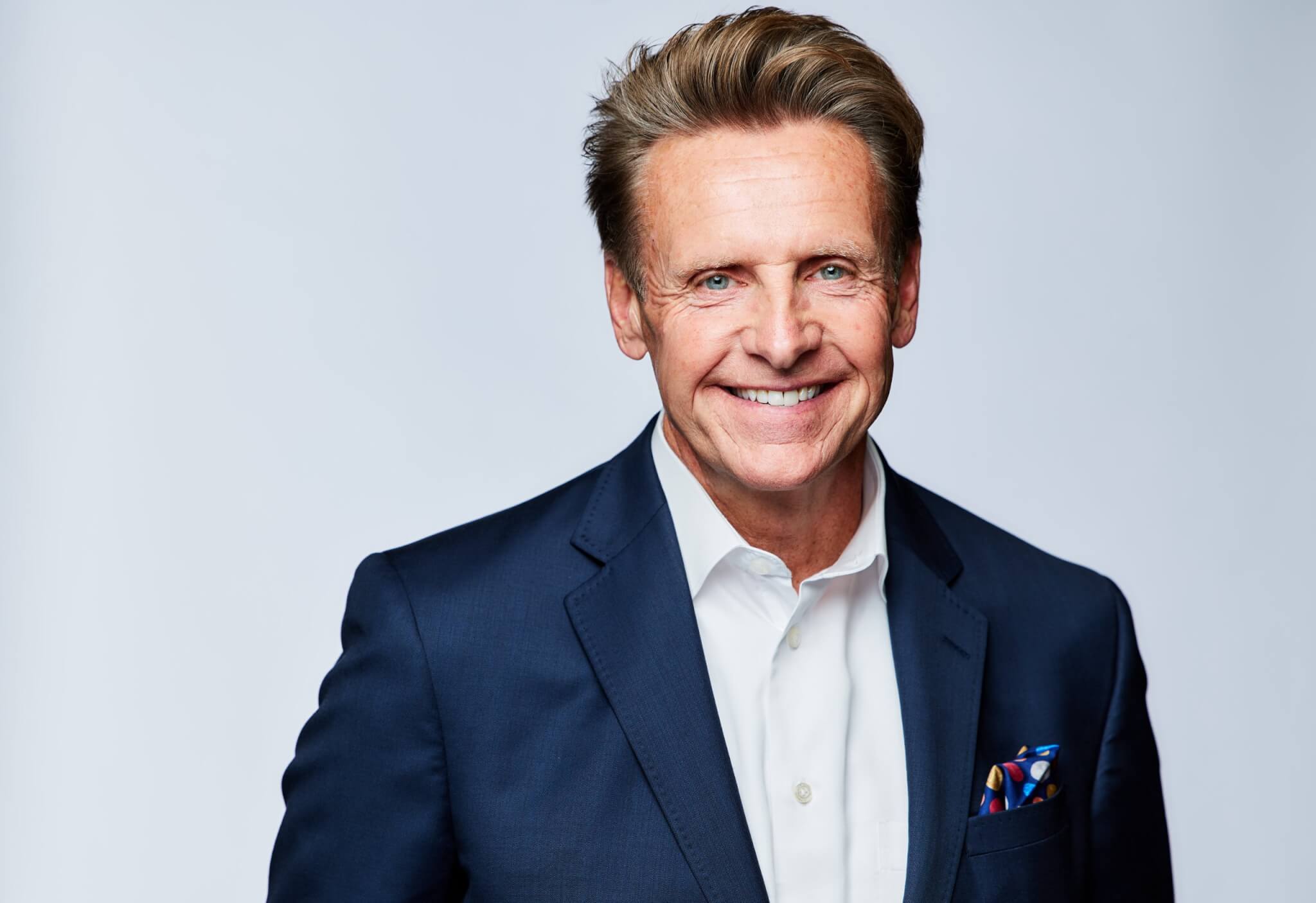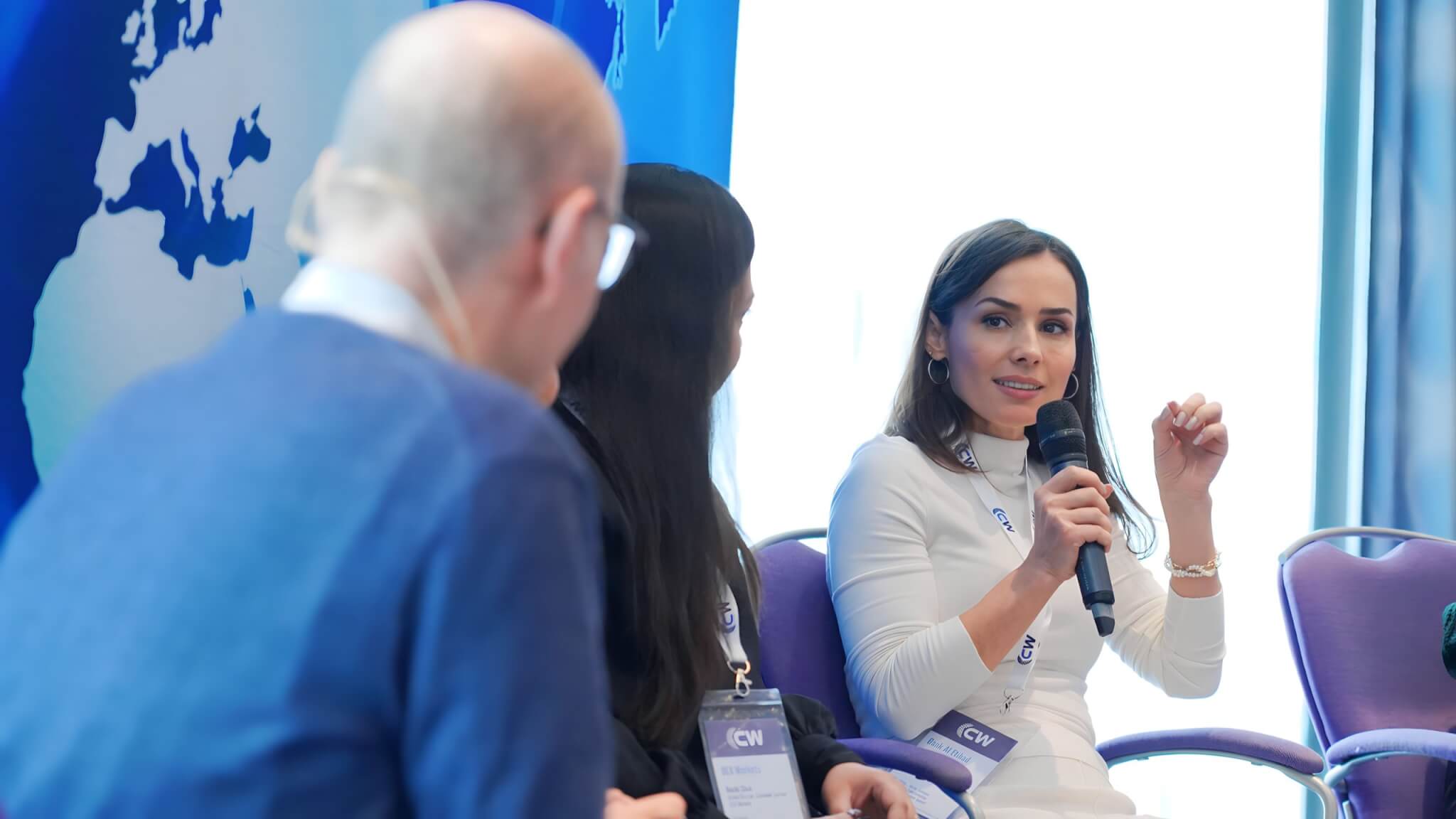We continue to introduce you to the top customer support, CX, marketing, and sales experts as a part of our series of interviews. So we are happy to publish our recent talk with magical (not just because she is a Harry Potter fan, but rather because of what she does) Talia Wolf.
Being the founder and chief optimizer of GetUplift, Talia helps clients increase their conversions and grow their businesses by using emotional targeting and customer-driven optimization. Moreover, Talia was recently voted one of the most influential voices in conversion optimization and has been invited to teach conversion optimization on stage by Google, Unbounce, MozCon, and many more. In addition to it, Talia Wolf has a lot of different courses that will help you to understand conversion optimization better and shares useful emotional targeting and conversion optimization tips on her X account.
This interview contains tons of valuable thoughts on improving customer experience through emotional targeting, conversion optimization, landing page customization, and many more. So what are we waiting for? Get ready for a fascinating and thought-provoking read!

Time travel with GetUplift: Talia Wolf’s career path
How has it all started
Q: Talia, you are a founder and a chief optimizer at GetUplift, a company that deals with customer-centric conversion optimization. Can you tell me a little bit about your career path? How has it all started?
When I first started out, I worked in a social media marketing agency. My role was creating strategies for clients. I used to do a lot of creative tasks and traffic-related work, like managing paid campaigns on different social media platforms.
While I was working in that agency, I started getting interested in optimizing the results that we were getting for clients. Our clients were mostly interested in likes and engagements back then (which was our main focus as an agency), then one day a client said to me: “I wonder if we can get any sales from this work you’re doing.” He was the first person to set my mind on it.
I started digging into Google Analytics, setting proper tracking up, measuring the results of our social media campaigns with a deeper lens.
Then, when I understood the results, I simply started changing the copy of an ad or a landing page to see if it would move the needle. And I really enjoyed it!
From the conversion optimization agency to GetUplift
Back then, there wasn’t really much conversion optimization going on. There were maybe one or two companies in the world that started focusing on it.
Meanwhile, I had moved on to work at daPulse (now Monday.com) as marketing and customer success, and around that time I met two brilliant guys that ran a lot of large budget PPC campaigns. They told me that they were going to build a conversion optimization agency, and I asked: “Oh, what’s that?” (laughing).
Funny to think, I was doing it all along and had no idea.
They said: “Well, it’s something that is new. Basically, we are not going to touch the traffic. We are just going to optimize the landing pages and websites." And I said: “Oh, that's what I am doing!” It was an actual thing! And I could do it full time? Brilliant.
The agency’s name was Conversioner, and my partners were brilliant, as they had learned a lot from their previous jobs in PPC and SEO.
When we first got started it was mostly trial and error. We knew that the biggest component that was missing in digital marketing was Emotion, and we started creating a framework around it.
Some time afterwards, we sold the agency, and I started working with the same people on a start-up that they were building. I worked there for about eight months as the CMO but I quickly understood I didn’t want to be doing that, I only wanted to focus on conversion optimization.” So I quit when I was six months pregnant with my first child and started GetUplift, a consulting and training space. And it’s been an incredible ride.
These days we do a lot of consulting and conversion optimization projects for brands like Sprout Social, AppsFlyer, Thinkific and other eCommerce and SaaS brands. On the other side of the biz, we also do a lot of online training which I love. These days, we have our Emotion Sells program and The Income Engine.

Excitement and challenge in Talia’s work
Q: The work you are doing, such as emotional targeting and conversion optimization, sounds fascinating! So can you tell me what are the most challenging and the most exciting parts of your job?
The challenging part
I’ll start with the challenging part, which is getting people to understand that optimization is not just about running an A/B test, changing an element on the page or getting more sales. It’s about understanding your customers better.
Optimization is not just about running an A/B test and getting more scales. It’s about understanding your customers better.
I had someone contact me a couple of weeks ago asking me to increase their conversions by 10% over the next three months. So I got on a call with them, and I said: “No one should promise you a 10% uplift in three months. If someone promises results to you, they probably don’t know what they’re doing. ”
What brands need is not someone who promises incredible results, but rather someone who promises a meaningful process. Brands need to know that if a test “fails” and it doesn’t work, they can still get amazing results, learn a lot, and optimize.
So the most challenging part is getting people on board the idea of not just testing for the sake of testing, but really going through a revolution within their company. It is essential not to treat clients only by saying: “Let’s get more sales,” but instead as “let’s improve the customer journey for OUR customers, and then, as a result, get the results that we need.” So that’s the challenge.
The exciting part
I absolutely love it when clients have these Aha! Moments, and realize what motivates their customers to take action, and convert. The real intent and emotional triggers. And, of course, the results come in, too. But it’s exciting just to see that process, learn, and uncover new things about people. It’s fun!
Emotional targeting and its impact on customer experience
The psychology behind people’s decision-making process
Q: You have mentioned the term emotional targeting framework earlier. So can you elaborate on this a little bit? What should a business do to implement the emotional targeting framework and understand its customers better?
When we started, we were trying to figure out how we can improve conversion for our clients. Back then, what people were doing was mostly changing elements on a page: trying a bigger call to action, changing the headline, or removing steps from their form, just because “people don’t like many fields.”
After running hundreds of tests, I understood that the missing piece in improving conversion is understanding the psychology behind people’s decision-making process. How do people decide to take action? What makes them buy something? Why do they sign up for a lead magnet or a demo for a SaaS product? What is the psychology behind it?
I understood that the missing piece in improving conversion is grasping the psychology behind people’s decision-making process.
And I started devouring books on psychology. From Dan Ariely’s Predictably Irrational to Daniel Kahneman’s Thinking, Fast and Slow. I read books about how people make decisions, the different biases we have, and the psychological triggers that make people take action.
Driven by emotions: how emotions regulate people’s decisions
These books were the key to understanding that the way we make decisions in life is based on emotions. We are irrational people that make irrational decisions and though we don’t like to think of ourselves that way, dozens of neuroscientists and psychologists have proven it. We make up all sorts of excuses to rationalize our decisions after we make them, but the basis of everything is emotional.
After I explain this, most people say: “Okay, we get that eCommerce is emotional, but not B2B.” Well, B2B is very emotional. And what I mean by this is that when your clients are trying to make a decision, there is a lot on their minds. It’s not just: “Oh, I need to be able to collaborate with a team,” or “I need to do my accounting.” It’s very emotional because you’re thinking about the different people working on this, you’re thinking about how people are going to respond to it, and how you will feel about yourself. Is it going to make you better in terms of who you do?
So, everything that we buy in life is based on different emotional triggers. How are we going to feel about ourselves? How are other people going to think about us? That strongly changes the way we make decisions in life, no matter whether it’s for our business or our personal life.
Understanding customers behind the screen
When I understood this, it changed everything for me. I could go to brands that hire our services and say: “Let’s figure out what the emotional triggers are! Let’s figure out the intent!” And then, using that, I could say: “Oh, so this is the copy that we need! And these are the images that we need to test for more conversions!” The results were and still are amazing.
Because now we understand the people behind the screen. Because your customers are more than just their geographical location. They are more than their age. They are the people. And if you understand them, then you can sell better for them. And you can achieve your own goals.
Your customers are more than just their geographical location. They are more than their age. They are the people.
So I guess to answer your question, I think that the biggest tip I can give is to go beyond numbers and simple numeric data and focus on why people make decisions and what motivates them in life in their prospects. Then you will be able to increase conversion.
This focus on why people make decisions actually would have made my career because I was the first person, or we were the only company in the world to do this. And it also helped me get on stage, teach these things, and write blog posts and guides about them. So it’s really something that people crave to know but don’t know how to go about it. And the key is understanding the people behind the screen.
How to make an emotionally targeted landing page
Q: So true. GetUplift also specializes in landing pages. So should a landing page reflect this understanding of clients’ emotions?
Yeah, for sure.
Once we’ve done the research, and, let’s say, as an example that we have figured out that people are very motivated by their self-image. They want to feel better about themselves as parents, they want to feel like pros in their own industry, or have higher self-esteem. This helps us understand their ultimate goals.
Now, what we need to figure out is the pain. What is stopping them from doing that? What are they doing right now to solve it? Then, on the landing page itself, we feature that pain, we show them we understand them and what impact it has on their life and make them a promise, a real one that solves what they want (e.g. higher self-esteem).
So the key to everything with Emotional Targeting is, making it about the customer. You understand their story, pain, concerns, roadblocks, and hesitations. And then you make the page, or the email, or the funnel about them.
The key to more conversions = making it about the customer.

Personality matters: Talia Wolf’s self-descriptive adjectives, values, vision, superpower, and a bit of magic
Self-descriptive adjectives
Q: Nice! So it was our block of work-related questions. Let’s move on to personality-related questions. If you had to describe yourself in 3 adjectives, what would they be and why?
Passionate. I think you can hear my voice when I start talking about my work (laughing). To be honest, I get super-super passionate about anything that I love, like my kids, skydiving, or Harry Potter!
Dedicated. Sometimes I am dedicated to a fault, like: “I want to get something done.” And I just go for it.
Wearing my heart on my sleeve. I am very easy to read. What I feel inside is what I say and I don’t try to sugarcoat anything to my friends, family or my clients.
Core values & vision
Q: What are the core values that drive you, both in work and in personal life?
So in work, it’s delivering value. That is my core principle. Delivering value is at the core of GetUplift as a brand, of who we are for our students and our clients. The most important thing is that it’s not about us, it’s about helping our customers and our students achieve their goals. That’s huge for me.
When we are optimizing, it’s about driving value for our client’s customers. It’s not about just putting up a landing page for the sake of it. Don’t just send an email to show up in people’s inbox. Drive value. Constantly think about the value that you are providing. That is super important.
In my personal life, it’s family and friendship. They are the most important to me.
Don’t just put up a landing page for the sake of it. Don’t just send an email to show up in people’s inbox. Drive value. Constantly think about the value that you are providing.
Q: Can you give me one word which sums up your vision best?
Purpose. Everything has to have a purpose and drive value.
Superpower
Q: If you could choose one superpower to have, what would it be, and why?
Well, I have to say because of COVID, I wish I could snap my fingers and go anywhere. I would really like to do that because I would love to go and see my grandparents in London... I haven’t seen them in a year.
But generally speaking, I’m a HUGE superhero and comic book fan. So this question is super hard for me (laughing), right now every single X-man is flooding into my brain. Every single superhero, like Wonderwoman or Captain Marvel. So I don’t know, I guess flying would be cool. I’m a skydiver so flying seems like the right thing to choose! I think that that’s what everyone would say.
But you know, if I were in Harry Potter’s world, I would choose the cloak of invisibility. I definitely would want to be invisible!
Let the magic begin
Q: So I see that you are a Harry Potter fan. Moreover, while filling in the contact form on the GetUplift webpage, I noticed that one of the reasons to contact you was: “You can contact me if you want to talk about Harry Potter.” And I found it so witty and wonderful, as I also love Harry Potter! My final question would be: what do you like the most about this series of books?
Oh my God, that’s such a hard question! That’s the hardest question you’ve asked me today, ha ha (laughing). You know, I think it’s hope. There is something about the book that gives hope.
Also, I have to say that I read it when I was growing up and reread it again and again. I reread it so many times (laughing). I also reread it as a parent. And each time it has a different context, drives different feelings, and different emotions. When I was in high school, it was one thing. When I was travelling the world, it was another thing, as a parent, wow - I can’t even explain.
I think it always inspires hope. Even though it’s such a hard book, there is something about it that gives you hope! And what about you?
Q: I guess the belief that magic is somewhere around. Harry Potter gives you an understanding that magic is not only about wizards, but rather about something inside you, like the feeling of love and of being loved. That’s also the kind of magic everyone can experience in life!
You’ve made me cry (laughing)! First of all, I couldn’t agree more. And I love the way you look at it! I used to have a T-shirt that said: “Books turn muggles into wizards.” I think that this phrase summarizes what you said. It’s wonderful!



